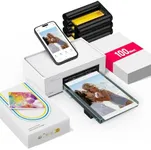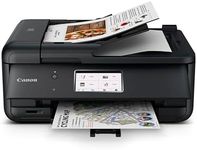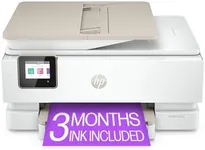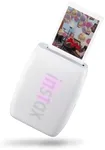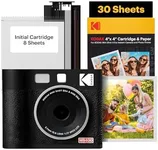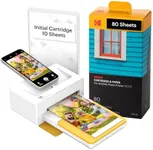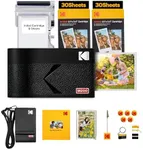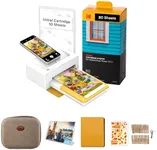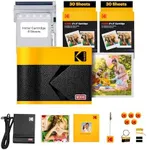Buying Guide for the Best Photo Printers For Photographers
Choosing the right photo printer is crucial for photographers who want to produce high-quality prints of their work. The right printer can make a significant difference in the color accuracy, detail, and overall presentation of your photos. When selecting a photo printer, it's important to consider several key specifications that will impact the quality and efficiency of your printing process. Understanding these specs will help you make an informed decision and ensure that the printer you choose meets your specific needs as a photographer.Print ResolutionPrint resolution is measured in dots per inch (DPI) and indicates how many dots of ink the printer can place on a square inch of paper. Higher DPI values generally mean better print quality, with more detail and smoother gradients. For photographers, a higher resolution is important to accurately reproduce the fine details and textures in your photos. Printers with a resolution of 2400 DPI or higher are typically suitable for professional photo printing. If you frequently print large photos or need the highest possible quality, aim for the highest DPI available.
Color AccuracyColor accuracy refers to how well a printer can reproduce the colors in your photos. This is crucial for photographers who need their prints to match the original image as closely as possible. Printers with more ink cartridges (such as those with six or more colors) tend to offer better color accuracy and a wider color gamut. Look for printers that use pigment-based inks, as they generally provide more accurate and long-lasting colors compared to dye-based inks. If you work with a lot of vibrant or subtle colors, prioritize color accuracy in your choice.
Ink TypeThere are two main types of ink used in photo printers: dye-based and pigment-based. Dye-based inks are known for their vibrant colors and smooth gradients, making them ideal for glossy prints. However, they may not be as long-lasting as pigment-based inks, which are more resistant to fading and water damage. Pigment-based inks are better suited for archival-quality prints and matte finishes. Consider the type of prints you produce most often and choose a printer with the appropriate ink type to match your needs.
Print SizePrint size refers to the maximum dimensions of the prints a printer can produce. Standard photo printers typically handle up to 8.5 x 11 inches, while larger format printers can print up to 13 x 19 inches or even larger. If you frequently print large photos or need to create posters and other large-format prints, opt for a printer that supports larger paper sizes. For everyday photo printing, a standard size printer may be sufficient. Consider your typical print size requirements when making your decision.
Print SpeedPrint speed is measured in pages per minute (PPM) and indicates how quickly a printer can produce prints. While speed may not be the most critical factor for photographers, it can be important if you need to produce a large number of prints in a short amount of time. Faster printers can save you time, especially during busy periods or when working on large projects. However, be aware that higher print speeds can sometimes compromise print quality. Balance your need for speed with the quality requirements of your prints.
Connectivity OptionsConnectivity options determine how you can connect your printer to your computer or other devices. Common options include USB, Wi-Fi, and Ethernet. Wi-Fi connectivity allows for wireless printing, which can be convenient if you want to print from multiple devices or locations. Some printers also offer mobile printing capabilities, enabling you to print directly from your smartphone or tablet. Consider your workflow and how you prefer to connect your devices when choosing a printer with the right connectivity options for you.
Paper HandlingPaper handling refers to the types and sizes of paper a printer can accommodate, as well as the capacity of its paper trays. For photographers, it's important to choose a printer that can handle a variety of photo paper types, including glossy, matte, and fine art papers. Additionally, a printer with multiple paper trays or a high-capacity tray can save you time by reducing the need to frequently reload paper. Consider the types of paper you use most often and ensure the printer you choose can handle them efficiently.
